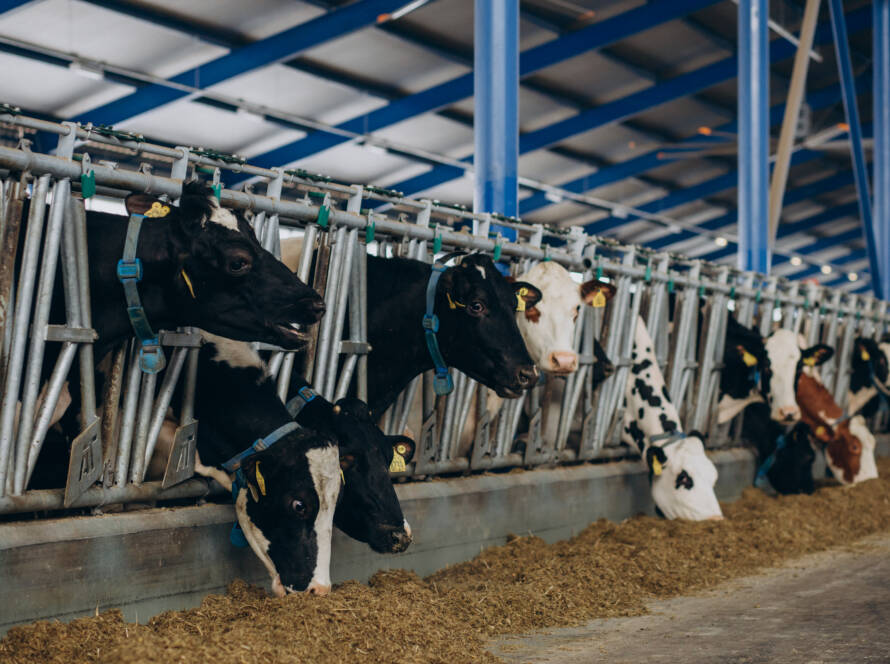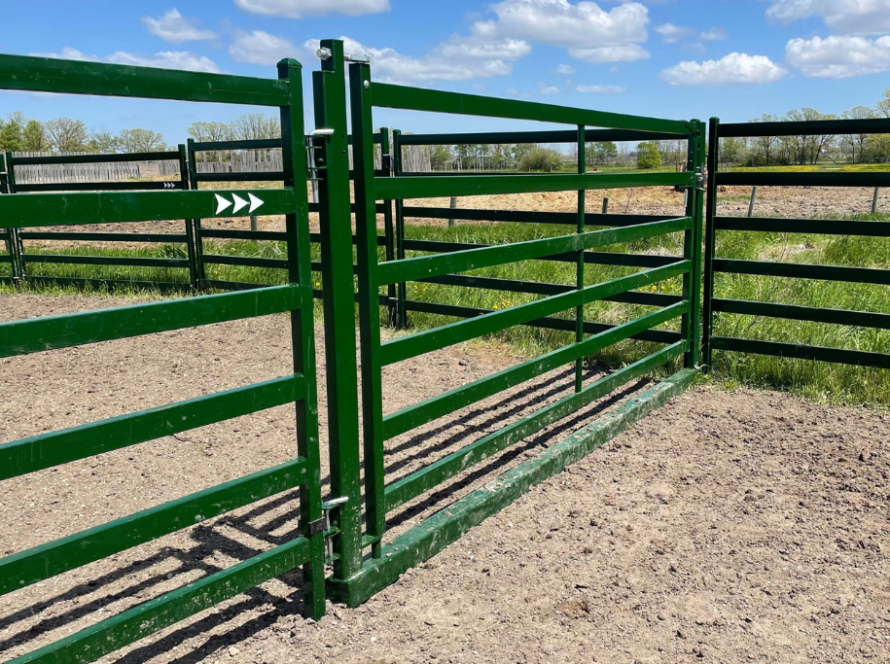Introduction to Livestock Handling Safety
Handling Livestock is a crucial aspect of farming operations and can be a risk when not properly managed. Ensuring the security and safety of livestock isn’t only about conforming to regulatory standards but also about safeguarding both the animals and the people who look after them. This guide provides practical safety tips for livestock that reduce the risk of handling large animals.
The main goal of this guide is to give farmers the necessary knowledge and techniques to increase livestock handling safety. Knowing and implementing safe procedures can create an improved and safer farm environment if you work with sheep, cattle, goats, or swine. The following guide will give you a comprehensive insight into animal behavior, safety equipment, and emergency methods to increase security and safety for livestock.
Understanding Livestock Behavior
Basic Principles of Livestock Behavior
Understanding livestock behavior is essential in ensuring handlers’ and animals’ safety and security. Animals are naturally inclined to behave in certain ways that, if understood, can be extremely helpful in managing them more effectively.
- Herd behavior: Animals usually behave and move as a unit. This instinct can be utilized to safely guide them from one place to the next and reduce the chance of accidents caused by panic.
- The Flight Zone: Each animal has its own space, known as the flight zone. If a handler enters the space, the animal moves away. Understanding how to control this zone could benefit guide animals energetically without causing stress or anxiety.
- Point of Balance: Livestock will generally move forward if the handler stands behind the point of balance and back up if the handler stands in front of this point. Effective use of this concept can facilitate smoother movement through handling facilities.
Recognizing Signs of Stress and Aggression
It is crucial to recognize signs of stress and aggression early for the safety of the livestock and the handlers.
- Stress Signals: Common indicators include excessive pacing, vocalization, and shaking. Early recognition and intervention can prevent these stressors from growing into more serious problems.
- Aggression Indicators: Signs like snorting, rubbing, or aggressive posture are crucial to be aware of. Handlers should be trained to recognize and respond to these signals quickly to ensure safe handling.
Safe Handling Facilities
A safe and secure setting to handle livestock requires the proper facilities to reduce stress and avoid injuries.
Design Features of Safe Handling Facilities
Facilities must be constructed to permit easy flow and movement of animals. A curving chute and rounded edges can keep animals from colliding, reducing stress and the chance of injuries. Non-slip flooring is a good way to prevent falls, and an adequate space will prevent crowding and injuries that can result.
Maintaining Handling Facilities
Regular maintenance of facilities for handling livestock is essential. This involves checking gates and fences, restraining equipment for damages, and ensuring all equipment is in good condition. Facilities must also be altered to accommodate the type and size of animals being handled.
Preparing for Safe Livestock Handling
Proper Training and Education
A proper training program is vital for all those involved in the safety of handling livestock. Knowing the behavior of animals, understanding the safety protocols, and reacting appropriately in various situations are talents gained through good Training.
- Training Courses: Farmers must look for training programs that cover safety tips for livestock and perfect methods of handling animals. These could include training sessions offered by agricultural cooperatives or veterinary organizations, as well as online courses focusing on livestock handling safety.
- Continuous learning: The field of animal handling is ever-changing, and new techniques and safety procedures are continuously being introduced. Continuous education is vital to maintain the safety of handling techniques.
Personal Protective Equipment (PPE)
Appropriate PPE can greatly reduce the risk of injury when working with livestock.
- Essential Equipment: Handlers must wear sturdy footwear with steel toes, sturdy gloves, and protective clothing. Other equipment, like helmets and face shields, might be necessary according to the circumstances.
- Proper use and maintenance: Training should also include the correct use and maintenance of PPE. This includes periodic checks on wear and tear and knowing when equipment should be replaced.
Daily Safety Practices
Daily safety procedures are essential to reduce the risks of handling livestock.
Routine Safety Checks
Daily checks are essential to warrant that the apparatus and equipment are in perfect order and safe for use.
- Checking the Facility: Start each day by conducting a thorough inspection of the handling areas. Look for potential hazards, such as nails protruding from the floor and slippery floors.
- Equipment Check: Equipment used for handling livestock, such as harnesses, ropes, and restraining devices, must be regularly inspected for signs of damage or wear.
Safe Handling Techniques
The essence of handling livestock safety lies in secure and efficient methods that consider animals’ behavior and well-being.
- Approach and Movement: Handlers should approach livestock calmly and quietly to avoid startling them. Knowing and using the areas of flight and points of balance could benefit them when moving the animals energetically without using excessive force.
- Use of Tools: Tools such as flags, sorting sticks, and paddles are useful, but they should be used safely to direct animals with care without causing injuries or stress.
Hygiene and Biosecurity Measures
High hygiene standards and strict biosecurity procedures are essential to stop the spread of diseases within the livestock population.
- Regular cleaning: Facilities must be maintained regularly to remove manure, dirt, and other particles that could be a source of pathogens.
- Biosecurity Protocols: Establish protocols, such as protocols for quarantining returning or new animals, vaccination programs, and routine health screenings to look for indicators of illnesses.
Emergency Preparedness and Response
Developing an Emergency Plan
An established emergency plan is vital to ensuring that you have a quick and effective response to emergencies that could cause dangers to livestock and handlers.
- Plan Components: An emergency strategy will address a variety of possible scenarios that could result in accidents to handlers, livestock evacuations, fires, and natural catastrophes. Each scenario should have clearly defined concrete steps, measurable actions, and clearly defined responsibility.
- Drills and Training: Regularly scheduled Training and emergency drills ensure everyone on the farm knows their roles. This can drastically reduce response times and benefit recovery in the event of real emergencies.
First Aid for Livestock-Related Injuries
Accidents can occur despite all precautions. Being aware of how to respond and providing the right first aid will prevent further injury and save lives.
- The First Aid Training: Human and animal first aid courses are essential. The person handling the livestock should know how to treat common injuries and when to seek professional medical help.
- The First Aid Kit: Maintain fully stocked first aid kits that are available throughout the farm. The kits should contain supplies to treat animal and human injuries.
Safety Considerations for Specific Livestock
The handling of different kinds of animals requires specific methods to assure security. We will explore particular guidelines for cattle, sheep, goats, and swine.
Cattle Handling Safety Tips
Cattle are powerful and large. They require specific handling techniques to warrant the safety of the animals.
- Facility Design: Choose strong, well-maintained fences as well as gates. The areas for handling should include escape ways for handlers.
- Behavior Management: Understanding cattle behavior, such as their reaction to body posture and eye contact, can benefit the safe management of cattle.
Sheep and Goat Handling Safety Tips
Although goats and sheep are usually smaller, they can be quick, agile, and very nimble, which poses unique challenges.
- Smaller enclosures: Use smaller handling systems to stop goats and sheep from running away and minimize the risk of injury.
- Gentle Handling: Beware of abrupt movements and loud noises, which could alarm these animals and trigger anxiety.
Swine Handling Safety Tips
Swine are highly intelligent and unpredictable. Their management requires meticulous planning and perseverance.
- Non-Slip Flooring: Use non-slip flooring to avoid injuries, as the swine can slip.
- Minimum Stress Handling: Employ techniques that reduce stress, like sorting boards, which gently guide the pigs without creating stress or causing aggression.
Implementing Technology for Enhanced Safety
Advances in technology could significantly increase the safety of handling livestock by supplying tools to aid in the monitoring and management of livestock.
Innovative Safety Tools and Equipment
Modern equipment and tools can ease the physical strain of working with animals and increase security.
- Automated Watering and Feeding Systems: The systems reduce the requirement for direct contact with animals and can reduce stress for the handlers and livestock.
- Security Systems: Putting cameras into handling areas can help monitor animal behavior and ensure that areas are safe and secure.
Monitoring and Tracking Systems
Technology can also be used to track livestock health, providing important data that will improve livestock safety and boost management practices.
- GPS Tracking: Utilize GPS Tags and collars to track the location of animals, especially in open, vast areas.
- Health Monitoring Systems: Use systems that track vital signs and behavior and alert handlers to possible health problems before they turn crucial.
Conclusion
In this article, we’ve examined various essential aspects of livestock handling safety to highlight the importance of understanding animal behavior and maintaining and implementing strict security practices. Every element we’ve discussed is essential to creating a safe environment for the handlers and livestock. Implementing these safety measures is crucial to avoid injuries and to warrant the secure functioning of farm activities.
Safety is not only an issue of compliance with regulations; it is also a crucial element in ethical farming practices that benefit the welfare of animals and the well-being of everyone working on farms. Incorporating these practices every day transforms them from guidelines to an everyday routine in the field and ensures that safety is an integral element in all farm operations.



